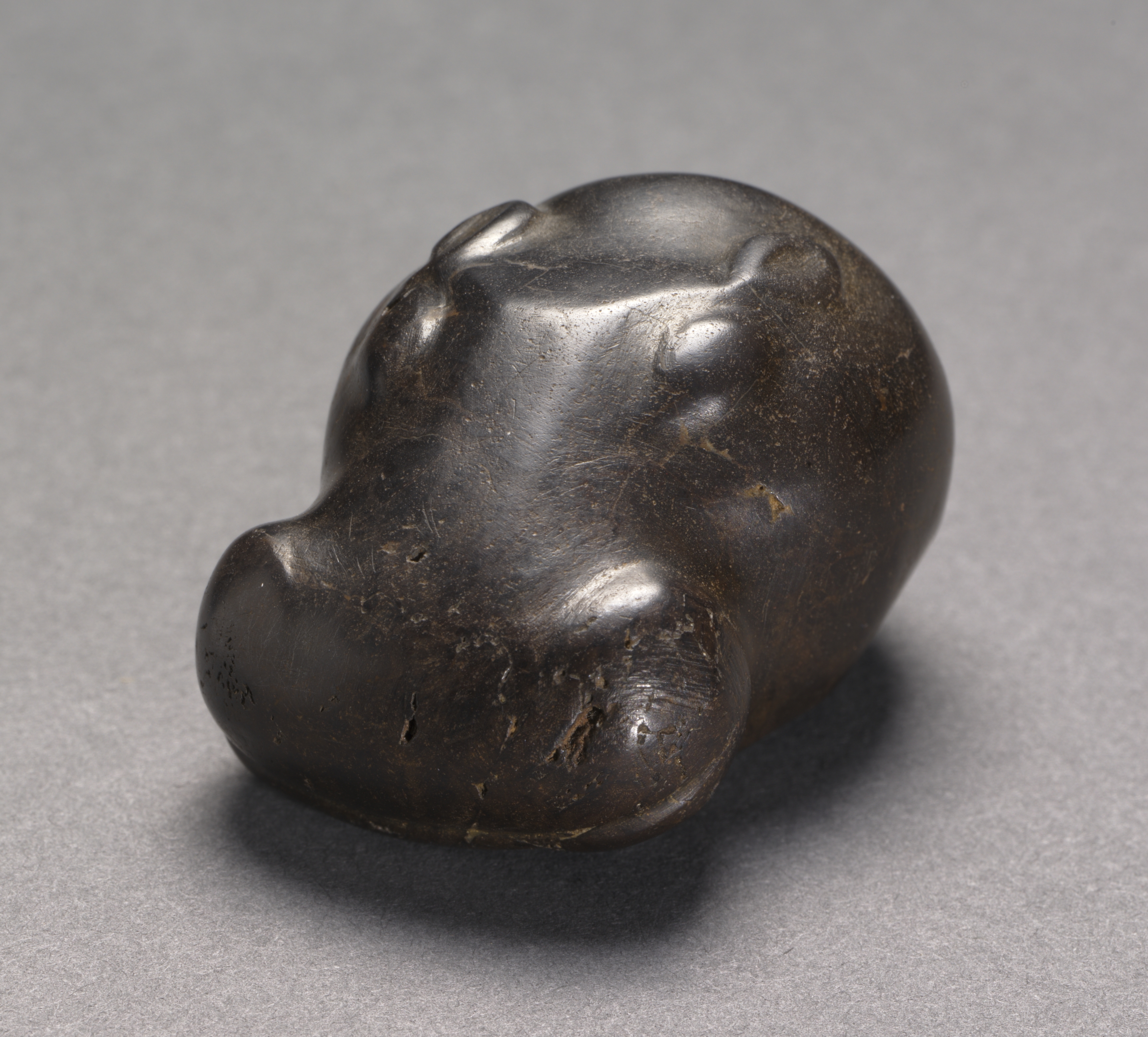The Cleveland Museum of Art
Collection Online as of April 25, 2024

Weight in the Form of a Hippopotamus Head
c. 1540–1296 BCE
Location: 107 Egyptian
Did You Know?
The word hippopotamus comes from the ancient Greek for "river horse" (ἱπποπόταμος).Description
Sensuously carved and polished to a silky luster, this weight takes the form of a hippopotamus head. Eyes, ears, and nostrils ae modeled in relief; the mouth is closed. The flat underside provides a surface on which to rest the object. This hippo head weighs 62.1 grams, roughly three-quarters of a deben, a unit of weight in ancient Egypt. As such it does not correspond to any of the more usual subdivisions of the deben, although similar examples are known. In fact it is an inter-standard weight, representing eight seniu or two-thirds of a deben, and is equivalent of an Aegean unit of 62.1 grams.- Turner, Evan H. “Selected 1991 Acquisitions.” The Bulletin of the Cleveland Museum of Art 79, no. 2 (1992). p. 65, no. 17 www.jstor.orgBerman, Lawrence M., and Kenneth J. Bohač. Catalogue of Egyptian Art: The Cleveland Museum of Art. Cleveland, OH: Cleveland Museum of Art, 1999 Reproduced: p. 311; Mentioned: p. 311
- {{cite web|title=Weight in the Form of a Hippopotamus Head|url=false|author=|year=c. 1540–1296 BCE|access-date=25 April 2024|publisher=Cleveland Museum of Art}}
Source URL:
https://www.clevelandart.org/art/1992.114